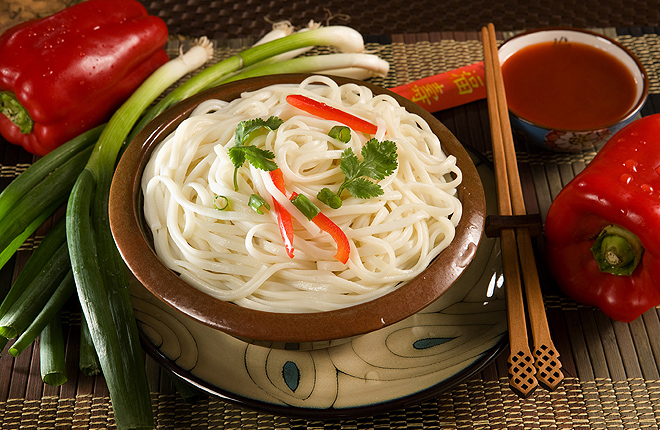Taking the Gray Out of Wheat Products
Even if you don’t know what “polyphenol oxidase” is, you’ve seen what it can do.
Polyphenol oxidase, an enzyme found in all plants, causes undesirable reactions such as browning in sliced apples, black spots in cut avocados, and dark marks on banana peels. It’s also responsible for gray discoloration in wheat products such as fresh noodles, fresh and frozen breads, and refrigerated biscuits—all made from hard white wheat.
Hard white wheat products such as white whole-grain breads are becoming more popular in the U.S. marketplace. Hard white wheat is the wheat of choice in select export markets, especially in Asia, where it is used to make a variety of fresh noodle products.
High levels of polyphenol oxidase in the grain make U.S. hard white wheats undesirable and place them at a disadvantage relative to wheats from Australia in the Asian markets, says Bob Graybosch, plant geneticist and research leader of the Agricultural Research Service’s (ARS) Grain, Forage, and Bioenergy Research Unit in Lincoln, Nebraska. “Polyphenol oxidase is a big deal for Asian markets, because they don’t want to see gray noodles when they hang them up to dry and then sell.”
For 15 years, Graybosch has been studying the polyphenol oxidase trait in wheat, investigating numerous samples of white wheat obtained from the ARS National Small Grains Collection (NSGC), in Aberdeen, Idaho.
“A lot of U.S. white wheats still have high levels of polyphenol oxidase,” Graybosch says. “To have a successful white wheat for both the export market and the domestic market, milling companies want low or no polyphenol oxidase.” Some low-polyphenol oxidase hard winter white wheats have been developed, but complete removal of this enzyme trait is more desirable.
In 2000, working with the University of Nebraska and Montana State University, Graybosch screened more than 3,000 wheats from the NSGC for the presence of polyphenol oxidase. The team then mated wheats that had low levels of the enzyme. Wheat breeding lines with very low or even near-zero levels of polyphenol oxidase were generated from these crosses.
“And lo and behold, we did it,” he says. “We developed a wheat with practically no polyphenol oxidase.” Graybosch produced the wheat line, called “070R1074,” by crossing two Australian wheats that were entered into the small-grains germplasm collection in the 1930s.“For 70 years, these two Australian wheats have been in the germplasm collection with this trait of interest and economic importance that the milling industry and exporters need and want,” Graybosch says. “This demonstrates the value of this diversified wheat collection. You don’t always know what you have until you do something with it.”
In a recent study, Graybosch and his colleagues discovered naturally occurring genetic mutations in 07OR1074 that resulted in the nearly complete loss of polyphenol oxidase activity. The trait has now been integrated in improved breeding lines developed by crossing 07OR1074 with elite Montana and Nebraska wheats. Further incorporation into elite lines will result in highly desirable cultivars that will expand the demand for U.S. hard white winter wheat.—By Sandra Avant, ARS Office of Communications.
“Taking the Gray Out of Wheat Products” was published in the April 2016 issue of AgResearch Magazine.
Key Facts
- Polyphenol oxidase is a natural enzyme in plants.
- It turns cut apples brown and some wheat products gray.
- ARS scientists developed a wheat with almost no polyphenol oxidase.
Full Story







